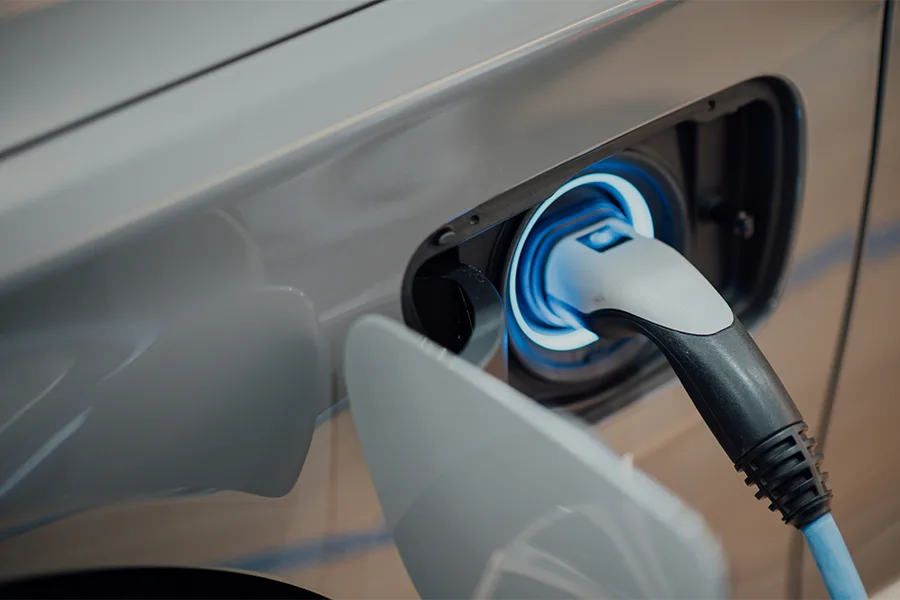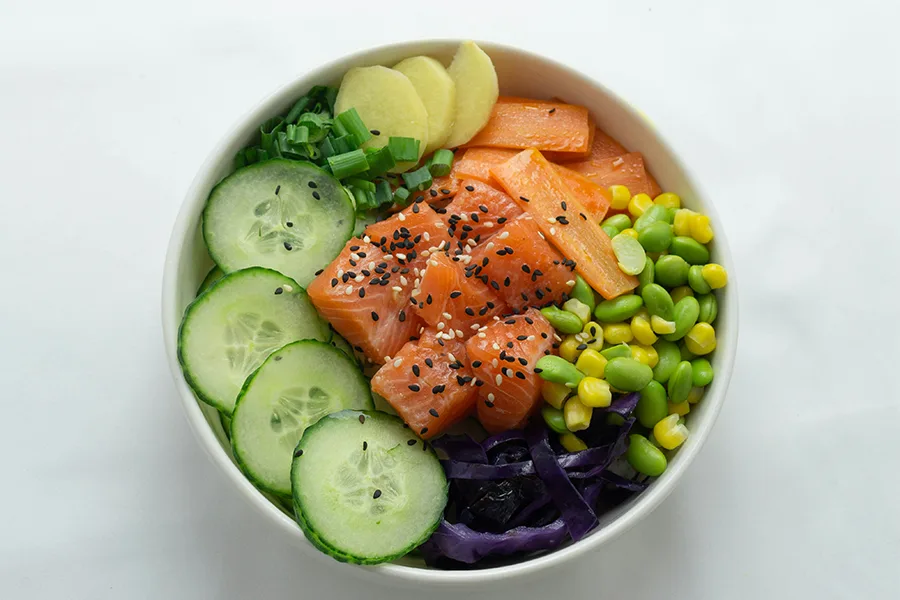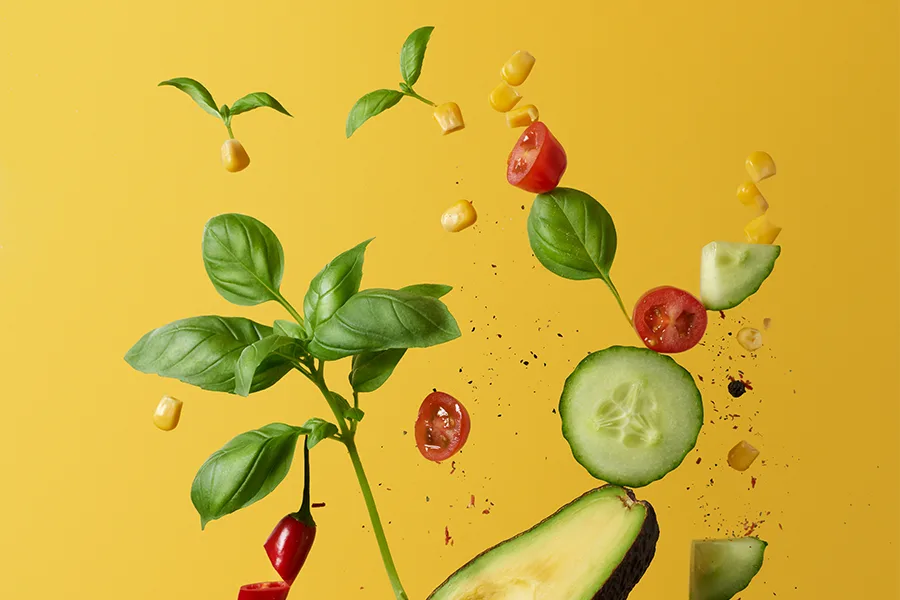CELEBRATING UNITY
- THE BUZZAAR
-
Mar 28
- Share post

The Significance of Eid: A Celebration of Family Ties and Gratitude
As the crescent moon signals the arrival of Eid, millions of Muslims around the world prepare to celebrate one of the most significant festivals in the Islamic calendar. Eid is a time for reflection, gratitude, and community bonding, marking the end of Ramadan — a month of fasting, prayer, and self-discipline. This festival, however, is much more than a time for celebration; it is a reminder of the values of family, unity, and spiritual renewal.
Eid, often referred to as Eid al-Fitr (the Festival of Breaking the Fast), is an occasion for Muslims to come together in worship, express their gratitude to Allah, and enjoy the fruits of their labor during the holy month of Ramadan. While its religious significance is deeply rooted in faith, the cultural and familial aspects of Eid are just as profound. In many ways, it is a time to celebrate the strength of family ties, the importance of giving, and the power of gratitude.

The Spiritual Significance of Eid
At its core, Eid is a celebration of spiritual fulfillment. The month of Ramadan is a time of deep reflection, where Muslims fast from dawn to dusk as a means of purifying the body and soul. It is a period of self-restraint, devotion, and empathy for those less fortunate. Eid marks the end of this rigorous spiritual journey, symbolizing a time of renewal and a fresh start in one’s relationship with Allah.
The first act of Eid morning is the special Salat al-Eid, a congregational prayer, which is performed in large gatherings. This prayer is not only a personal act of worship but also a community event, where Muslims come together in unity to express their gratitude to Allah for the strength and patience shown during Ramadan. The significance of this prayer is immense, as it sets the tone for the entire day — a day of happiness, gratitude, and connection.
The Zakat al-Fitr — a form of charity given before the Eid prayer — also holds spiritual importance. This obligatory almsgiving ensures that even those who are less fortunate can partake in the celebrations of Eid. It is a reminder that the essence of Eid lies in the spirit of giving and compassion, reinforcing the sense of community and brotherhood.
Family Ties and Unity
Beyond the rituals of prayer and fasting, Eid is deeply intertwined with the celebration of family ties. For many, the essence of Eid is found in the reunion of loved ones, the strengthening of bonds, and the opportunity to create lasting memories together.
In countless households, the arrival of Eid is a time for families to come together, often after a month of fasting and long hours of work. It is a moment for parents to share stories with their children, for siblings to laugh and bond, and for extended families to reconnect and celebrate the joys of togetherness. Many families organize gatherings, feasts, and festivities that highlight the importance of hospitality and familial love.
One of the most cherished traditions of Eid is the preparation of special foods, often passed down through generations. In many cultures, the aroma of traditional dishes fills the air — from sweet treats like maamoul and baklava to savory dishes like biryani and kebabs. These meals are not merely about food but are symbolic of the warmth, love, and care that families offer one another. Sharing a meal during Eid transcends the simple act of nourishment; it serves as a vehicle for connection and a celebration of family heritage.
Eid also provides a unique opportunity for parents to teach children the values of gratitude and generosity. By participating in acts of charity, like giving Eidi (money or gifts) to younger family members or donating to those in need, children learn the importance of kindness, selflessness, and empathy. These lessons, imparted in the home during Eid, carry forward into future generations.

Gratitude and Reflection
At the heart of Eid is the spirit of gratitude. This is a time when Muslims are encouraged to give thanks not only for the material blessings they have but also for the gift of health, love, and life. The month of Ramadan serves as a reminder of the struggles faced by the less fortunate, and Eid is a moment to reflect on the abundance in one’s own life.
The act of expressing thanks to Allah for His guidance, mercy, and provision is central to the celebrations. For many, Eid serves as a spiritual benchmark — a chance to renew one’s commitment to faith and to approach life with a heart full of gratitude. In this sense, Eid is not just about the festive rituals but about cultivating an attitude of thankfulness that permeates every aspect of life.
Eid’s emphasis on reflection extends to the appreciation of one’s family and community. It is a time to acknowledge the sacrifices and love that family members have shown throughout the year. Whether it is a parent’s hard work to provide for their children, or a sibling’s constant support, Eid serves as a reminder to cherish and nurture these relationships.
Community and Connection
While Eid is a personal spiritual experience, it also fosters a sense of global unity among Muslims. Regardless of geographical location, cultural background, or personal circumstances, Muslims around the world celebrate Eid with the same joy and reverence. The shared experiences of prayer, feasts, and gratitude create a powerful sense of belonging to a global community.
For many, Eid is a time to renew and strengthen community bonds. In addition to family celebrations, many Muslims engage in community service, volunteering, or organizing charitable events. These collective acts of kindness and support serve to deepen the sense of connection, both within families and between neighbors.
In conclusion, Eid is far more than a festival; it is a celebration of family ties, a time to express gratitude, and an opportunity to reflect on the importance of community. It is a reminder that, in the hustle and bustle of everyday life, the bonds we share with our loved ones and the gratitude we express for life’s blessings are the true essence of this blessed festival. As we celebrate Eid, let us cherish these moments of togetherness, and let the spirit of compassion, unity, and gratitude guide us throughout the year.
EVs: The Future of Driving – Why You Should Consider an Electric Vehicle for Your Next Car
The automotive industry is experiencing a revolutionary shift, with electric vehicles (EVs) leading the charge toward a more sustainable future. Once considered a niche option for eco-conscious consumers, EVs are now becoming mainstream, offering a compelling mix of environmental benefits, cost savings, and cutting-edge technology. If you’re in the market for a new car, it might be time to consider making the switch to an electric vehicle. Here’s why.
Environmental Benefits
One of the most significant advantages of EVs is their positive impact on the environment. Traditional gasoline and diesel vehicles are major contributors to air pollution and greenhouse gas emissions, which play a significant role in climate change. In contrast, electric vehicles produce zero tailpipe emissions, making them a cleaner and greener choice.
By driving an EV, you are reducing your carbon footprint and helping to decrease the amount of harmful pollutants released into the air. Even when considering the electricity required to charge an EV, studies have shown that EVs still have a lower overall environmental impact compared to their internal combustion engine counterparts, especially if the power comes from renewable energy sources like solar or wind.
As more countries and cities introduce stricter emissions regulations, the adoption of electric vehicles is becoming crucial for achieving climate goals and improving urban air quality. Transitioning to EVs is a powerful step toward a sustainable future for all.

Cost Savings
While the initial price of an electric vehicle can sometimes be higher than that of a conventional car, the long-term savings are significant. The cost of charging an EV is much lower than fueling a gasoline-powered car. For example, electricity is often a fraction of the cost of gasoline, and with the increasing number of home charging stations, you can power your car at a much lower rate than filling up at a gas station.
Additionally, EVs require less maintenance than traditional cars. They have fewer moving parts, meaning there’s less that can go wrong. There’s no need for oil changes, and the brake systems in electric cars tend to last longer due to regenerative braking. Over the years, these savings on fuel and maintenance can add up to a substantial amount, making EVs more economical in the long run.
Governments in many countries are also offering incentives for EV buyers, such as tax credits, rebates, and reduced registration fees. These financial incentives further lower the barrier to entry and make EVs an attractive option for those looking to save money.

Advancements in Technology
Electric vehicles have come a long way in terms of technology. Modern EVs are packed with innovative features, from enhanced safety systems to advanced driver-assistance technologies (ADAS). Many EVs now come with intuitive touchscreens, smartphone integration, and even autonomous driving capabilities.
Battery technology has also seen tremendous improvements. The driving range of electric vehicles has steadily increased, with some of the latest models offering over 300 miles on a single charge. This makes EVs much more practical for everyday use and long road trips, removing one of the main concerns that many consumers had in the past — range anxiety.
Charging infrastructure has expanded rapidly as well. Many cities and highways now have an extensive network of charging stations, making it easier than ever to charge your EV while you’re out and about. Some EVs even support ultra-fast charging, allowing you to recharge up to 80% of the battery in just 30 minutes.
The Future of Driving
The transition to electric vehicles is not just a trend; it’s the future of driving. With advancements in battery technology, charging infrastructure, and regulatory support, the adoption of EVs is expected to grow exponentially in the coming years. Car manufacturers are already investing heavily in electric vehicle development, with many planning to phase out internal combustion engine vehicles altogether in favor of fully electric lineups in the near future.
Moreover, as the global push for sustainability continues, the demand for electric vehicles will only increase. From cities offering EV-friendly incentives to automakers focusing on building more affordable and high-performance EVs, the future of driving is electric, and it’s happening now.
Is an EV Right for You?
If you’re considering purchasing a new car, it’s worth taking a closer look at electric vehicles. Not only will you be contributing to a cleaner planet, but you’ll also benefit from long-term cost savings and enjoy the latest advancements in automotive technology. Whether you’re concerned about reducing your carbon footprint, saving money on fuel and maintenance, or simply enjoying a more efficient and modern driving experience, an electric vehicle could be the perfect choice for your next car.
The future of driving is electric — and it’s time to make the shift.
Summer Fashion Trends 2025: How to Stay Stylish in the Heat
As the days grow longer and the temperatures rise, it’s time to update your wardrobe for the summer season. 2025 brings exciting fashion trends that make it easier than ever to stay stylish and comfortable in the heat. From lightweight fabrics to vibrant colors and chic accessories, the latest summer styles are all about embracing the warmth while looking your best. Here’s your guide to staying fashionable and comfortable during the sunny months.

1. Lightweight Fabrics: The Key to Comfort
When it comes to summer fashion, breathable fabrics are a must. The key to staying cool and stylish is choosing clothes made from lightweight, natural materials that allow your skin to breathe. Cotton, linen, and silk are the go-to fabrics for summer 2025, as they not only provide comfort but also add a touch of elegance to any outfit.
Linen, in particular, is having a major moment this year. Known for its breathability and relaxed texture, linen is perfect for hot weather, allowing air to circulate and keeping you cool. Linen shirts, dresses, and trousers are a great choice for both casual and semi-formal occasions. Additionally, cotton and silk blends offer a luxurious feel, making them perfect for everything from day-to-night looks to beachside outings.
2. Vibrant Colors: Brighten Your Wardrobe
Summer is all about color, and 2025 is no exception. The season’s fashion trends are filled with bold, vibrant hues that evoke a sense of fun and optimism. Think vivid oranges, hot pinks, electric blues, and sunny yellows — the brighter, the better!
One of the standout trends is the return of neon. Neon green, pink, and yellow are making a splash this year, often seen in oversized shirts, skirts, and accessories. These colors not only make a statement but also add a playful element to any outfit.
For those who prefer subtler shades, pastel tones continue to dominate the summer palette. Soft lavender, mint green, and peachy pinks are perfect for creating light, airy outfits. Pair a pastel top with white linen pants for a chic, breezy look that is both stylish and comfortable.

3. Effortless Dresses: Breezy and Beautiful
Nothing says summer like a stylish dress that offers both comfort and flair. The effortless dress is a must-have in your summer wardrobe this year. Flowy, A-line, and tiered dresses in breathable fabrics like cotton and linen will keep you cool while looking effortlessly chic.
Maxi dresses are a key trend for 2025, offering a relaxed yet sophisticated vibe. Opt for a flowing floral print or a solid color dress paired with strappy sandals for a timeless summer look. Midi dresses are also on the rise, especially in lighter fabrics and simple designs, perfect for everything from a day at the beach to an evening out.
4. Chic Accessories: Complete Your Look
Accessories are the perfect way to elevate your summer outfits. In 2025, the focus is on practicality and bold statement pieces that enhance your look without sacrificing comfort.
Wide-brimmed hats are making a huge comeback, offering both sun protection and style. A straw hat or a wide-brimmed fedora adds a chic touch to any outfit, from a sundress to a casual shorts-and-top combination. Sunglasses are another essential accessory, with oversized frames and colorful lenses becoming more popular this season.
When it comes to bags, crossbody and tote bags are the go-to options for 2025. Opt for a woven or canvas tote for beach days or casual outings. For evening events, a sleek, minimalist clutch in metallic tones can add a touch of sophistication to your summer look.
5. Footwear: Comfort Meets Style
Summer footwear is all about comfort without compromising style. Sandals continue to be a favorite, with chic designs ranging from simple slides to gladiator-inspired sandals that wrap around the ankle. For those who prefer something with more support, stylish sneakers and espadrilles are also on trend.
Platforms and wedges are making a return in 2025, offering height without sacrificing comfort. Look for wedge sandals with a raffia or cork base, which pairs perfectly with dresses, skirts, or wide-leg pants.
6. Sustainable Fashion: Eco-Friendly Choices
As sustainability continues to be a major influence in the fashion world, 2025 sees an emphasis on eco-friendly fabrics and brands. Choose clothing made from organic cotton, hemp, or recycled materials to reduce your environmental impact while staying on-trend.
Brands are now offering more sustainable options that are both stylish and earth-conscious. Opting for pieces from these collections will not only keep you looking fashionable but will also help support brands committed to reducing their carbon footprint.
Staying stylish in the heat doesn’t have to be a challenge. With the right fabrics, colors, and accessories, you can create comfortable, fashion-forward outfits that are perfect for the summer of 2025. From lightweight linen dresses to bold neon hues and eco-friendly choices, this season offers a variety of trends that cater to different tastes and preferences. So, embrace the warm weather and step out in style with these summer fashion tips that keep you cool, comfortable, and chic all season long.
Maldives: A Heavenly Travel Destination for Your Dream Vacation
When it comes to dream vacations, few destinations rival the Maldives in terms of beauty, serenity, and luxury. This tropical paradise, located in the Indian Ocean, is a collection of 1,192 islands, each offering pristine beaches, turquoise waters, and unparalleled natural beauty. Whether you’re seeking a romantic getaway, a family retreat, or an adventure-filled escape, the Maldives offers something for everyone. Here’s why this idyllic archipelago should be at the top of your travel bucket list.

A Picture-Perfect Paradise
The Maldives is often described as a slice of heaven on Earth, and it’s easy to see why. The archipelago is made up of over a thousand coral islands, many of which are uninhabited, offering the perfect escape from the hustle and bustle of daily life. The islands are surrounded by crystal-clear waters, white sandy beaches, and lush greenery, creating a postcard-perfect setting that feels almost surreal.
Whether you’re relaxing on the beach or exploring the underwater world, every moment in the Maldives feels like you’re stepping into a dream. The calm, azure waters are ideal for snorkeling, swimming, and diving, and the surrounding coral reefs are teeming with vibrant marine life, including colorful fish, turtles, and even dolphins.
Luxury Resorts and Overwater Villas
One of the standout features of the Maldives is its exclusive, luxurious resorts. Many of these resorts are located on private islands, offering guests an intimate and secluded experience. The Maldives is renowned for its overwater villas, which provide breathtaking views of the ocean, direct access to the water, and complete privacy. These villas offer the ultimate in comfort, with plush interiors, private pools, and outdoor showers.
Resorts in the Maldives cater to every need, offering world-class amenities such as fine dining, private spa treatments, and personalized butler services. Many resorts also offer unique experiences, like private candlelit dinners on the beach, sunset cruises, and guided snorkeling trips. Whether you’re indulging in a couples’ spa day or enjoying a gourmet meal overlooking the ocean, the Maldives promises luxury at every turn.

Tranquility and Peaceful Escapes
For those looking to unwind and disconnect from the world, the Maldives is the ultimate destination for peace and tranquility. The islands’ serene atmosphere, away from the noise and chaos of city life, makes it an ideal retreat for relaxation. Imagine waking up to the sound of gentle waves lapping against the shore, enjoying a peaceful breakfast with an ocean view, and spending the day unwinding in total solitude.
The Maldives is known for its laid-back vibe, making it the perfect place to recharge your mind and body. Whether you’re lounging by the pool, meditating on the beach, or simply enjoying the sunset, the destination offers a calming escape that allows you to reset and reconnect with yourself.
Adventure Awaits
While the Maldives is often associated with relaxation and luxury, it also offers plenty of opportunities for adventure and exploration. The surrounding coral reefs are a haven for divers, with some of the world’s most stunning underwater ecosystems. You can explore vibrant coral gardens, swim with manta rays, or dive with whale sharks for a truly unforgettable experience.
For those who prefer more low-key activities, there’s kayaking, paddleboarding, and fishing. You can even take a sailing excursion around the islands or embark on a dolphin-watching tour. The Maldives offers a perfect balance between adventure and relaxation, making it suitable for all types of travelers.
Ideal for Romance and Special Occasions
The Maldives is a world-renowned romantic destination, often chosen by couples for honeymoons, anniversaries, and other special occasions. The secluded islands, private villas, and intimate ambiance create the perfect setting for romance. Many resorts offer honeymoon packages, complete with private candlelit dinners, couples’ spa treatments, and personalized experiences designed to make every moment magical.
The Maldives also makes for an unforgettable wedding destination, with many resorts offering destination wedding services. Imagine exchanging vows on a secluded beach with the sound of the ocean as your backdrop — it’s the ultimate dream wedding for many couples.
Sustainable and Eco-Friendly Tourism
While the Maldives is known for its luxury, it is also increasingly focused on sustainability and eco-friendly tourism. Many resorts are committed to protecting the environment and preserving the delicate coral reefs. From using solar power to promoting eco-friendly practices, visitors can enjoy their vacation with a clear conscience, knowing their stay supports sustainable tourism.
The Maldives is the epitome of a dream vacation — a place where luxury, tranquility, and natural beauty converge to create a truly magical experience. Whether you’re seeking a peaceful retreat, an adventure beneath the waves, or a romantic escape, the Maldives offers everything you could ever want in a getaway. With its pristine beaches, world-class resorts, and unmatched serenity, it’s no wonder the Maldives is considered one of the most beautiful and sought-after travel destinations in the world. If you’re looking for the ultimate vacation, the Maldives promises an experience like no other.
Smart Home Tech: Upgrading Your Living Space with the Latest Innovations
In today’s fast-paced world, technology is transforming the way we live — and this includes how we interact with our homes. From security and energy efficiency to convenience and comfort, smart home technology is revolutionizing living spaces and making daily life easier. Whether you’re a tech enthusiast or just looking to improve your home’s functionality, upgrading to smart home tech offers a range of benefits that can enhance your lifestyle. Let’s explore the latest innovations in smart home technology and how they can make your home more efficient and future-ready.

1. Smart Thermostats: Optimizing Comfort and Efficiency
One of the most popular and energy-efficient smart home gadgets is the smart thermostat. Devices like the Nest Thermostat and Ecobee are designed to learn your temperature preferences and automatically adjust to optimize your home’s climate. These thermostats can be controlled remotely through your smartphone, allowing you to adjust the temperature before you even walk through the door.
Beyond convenience, these devices help save energy. By learning your schedule, they can lower heating and cooling costs when you’re away, and ensure your home is comfortable when you return. Over time, the savings on your utility bill make smart thermostats a worthwhile investment while reducing your home’s environmental footprint.
2. Smart Security Systems: Protecting Your Home with Ease
Security is one of the biggest concerns for homeowners, and smart home technology has revolutionized the way we protect our living spaces. Smart security systems, such as Ring doorbell cameras, Nest Hello, and Arlo cameras, offer live video feeds of your front door, backyard, and other vulnerable spots, directly to your phone. This means you can monitor your home from anywhere in the world.
In addition to cameras, smart locks are another innovation that enhances home security. Devices like August Smart Lock and Yale Assure Lock allow you to lock and unlock your doors remotely. You can also create virtual keys for family members or service personnel, eliminating the need for physical keys. Some systems even notify you when someone enters or exits your home, giving you greater peace of mind.
3. Voice Assistants: Controlling Your Home with Ease
Voice assistants, like Amazon Alexa, Google Assistant, and Apple’s Siri, have become central to the smart home experience. These devices act as the brain of your home, enabling you to control almost everything with simple voice commands. Whether you want to adjust the lighting, set the thermostat, play music, or even order groceries, voice assistants make it easy to manage daily tasks without lifting a finger.
Integration with other smart devices, such as lights, thermostats, and security cameras, allows for seamless control. For instance, you can say, “Alexa, dim the lights,” or “Hey Google, lock the door,” making it easier to manage multiple functions at once.
4. Smart Lighting: Enhancing Ambience and Energy Efficiency
Smart lighting is another game-changer in home technology. With smart bulbs like Philips Hue or LIFX, you can adjust the brightness and color of your lights, creating the perfect atmosphere for any occasion. Whether it’s setting the mood for a movie night or adjusting your lighting for work or relaxation, these bulbs offer customization at your fingertips.
Smart lighting also improves energy efficiency. Many smart bulbs can be set to automatically turn off when not in use, and some systems allow for motion-sensing capabilities, so lights only turn on when someone enters the room. These features not only save energy but also extend the lifespan of your bulbs.

5. Smart Appliances: Making Everyday Tasks Easier
The latest in kitchen and household appliances are also becoming “smart.” From refrigerators that can track your groceries and suggest recipes to ovens that can be controlled remotely, smart appliances are making cooking and cleaning more efficient. Brands like Samsung and LG offer smart refrigerators that can track expiration dates, create shopping lists, and even display family calendars.
Additionally, smart washing machines and dryers, such as those from Whirlpool and Bosch, allow you to start or monitor laundry cycles remotely, receive notifications when cycles are complete, and adjust settings based on the size and fabric type of your load. These appliances make life easier, save time, and improve the overall efficiency of household chores.
6. Smart Home Hubs: The Heart of Your Smart System
To tie all these smart devices together, a home hub like Samsung SmartThings or Amazon Echo Show can serve as the central command center. These hubs connect all your smart devices and enable you to control them through a single app or voice command. A hub can be programmed to create routines, like adjusting the thermostat and turning on the lights at a specific time, or even locking the door when you leave for work.
By integrating all your devices into one system, smart home hubs provide added convenience and efficiency, allowing you to manage everything with ease.
7. Sustainability: Reducing Your Home’s Environmental Impact
Many smart home devices are designed with sustainability in mind. From energy-saving thermostats to water-efficient smart sprinklers, technology is helping homeowners reduce their environmental impact. For instance, the Rachio Smart Sprinkler system adjusts watering schedules based on local weather forecasts, ensuring your lawn gets the right amount of water without wasting resources.
Smart home tech also encourages mindful energy consumption. Devices that monitor electricity usage, such as the Sense Energy Monitor, can provide insights into which appliances are using the most power, helping homeowners make informed decisions about their energy consumption and further reduce their environmental footprint.
Upgrading your home with the latest smart technology isn’t just about convenience; it’s about creating a more efficient, secure, and sustainable living environment. With innovations like smart thermostats, voice assistants, and energy-efficient appliances, the future of home living is brighter than ever. Whether you’re looking to improve your home’s security, reduce your energy consumption, or simplify everyday tasks, smart home technology offers the tools to make your living space more functional, comfortable, and future-ready. By embracing these advancements, you’ll not only enhance your lifestyle but also contribute to a more sustainable and connected world.
The Ultimate Guide to Healthy Eating This Spring: Nutritious Recipes and Tips
As the days get longer and the weather warms up, spring is the perfect time to refresh your eating habits and embrace a lighter, more nutritious diet. With an abundance of fresh, seasonal produce available, this season offers the perfect opportunity to incorporate a variety of healthy, vibrant ingredients into your meals. Whether you’re looking to boost your energy, maintain a balanced diet, or simply enjoy some delicious, nutrient-rich food, this guide will help you make the most of spring’s bountiful offerings. Here are some tips, healthy eating habits, and springtime recipes that will help you stay nourished and energized.

1. Embrace Seasonal Produce
Spring is known for its fresh fruits and vegetables that are packed with vitamins and antioxidants. Take advantage of the following seasonal ingredients:
- Asparagus: Rich in fiber and folate, asparagus is a great source of vitamins A, C, and K. It’s perfect for a light salad or roasted as a side dish.
- Strawberries: Sweet and loaded with vitamin C, strawberries are great for smoothies, yogurt bowls, or as a refreshing snack.
- Spinach and Arugula: These leafy greens are high in iron, calcium, and vitamin K, making them a nutritious base for salads or a great addition to omelets and sandwiches.
- Peas: Full of protein and fiber, peas add a natural sweetness to dishes like stir-fries, pasta, or spring vegetable soups.
- Radishes: Low in calories and high in antioxidants, radishes are a crunchy and refreshing addition to salads or can be enjoyed on their own with a little sea salt.
By incorporating these fresh ingredients into your meals, you can take full advantage of the nutrients available during the spring season.
2. Go for Lighter Meals
Spring is all about lighter, fresher meals that are easy to digest and refreshing. Incorporating lean proteins, whole grains, and plenty of vegetables will help you maintain energy without feeling sluggish.
- Grilled chicken or fish: These proteins are lean and can be paired with fresh vegetables, quinoa, or brown rice for a complete, satisfying meal.
- Salads with seasonal toppings: Create a nutrient-packed salad by combining greens like spinach or arugula with seasonal fruits (like strawberries or citrus), nuts, seeds, and a light vinaigrette dressing.
- Zucchini noodles or cauliflower rice: If you’re looking for a low-carb alternative, spiralized zucchini or cauliflower rice can be used as a base for your favorite pasta or stir-fry dishes.
3. Healthy Spring Recipes
Here are a couple of simple, nutritious recipes that highlight the fresh flavors of spring:
- Spring Veggie Salad with Lemon Vinaigrette
- Ingredients: Mixed greens (spinach, arugula), asparagus (lightly roasted), radishes (sliced thin), strawberries (sliced), chickpeas (cooked), feta cheese, and a lemon vinaigrette (lemon juice, olive oil, Dijon mustard, honey, salt, and pepper).
- Instructions: Toss the greens, asparagus, radishes, strawberries, and chickpeas in a large bowl. Drizzle the vinaigrette over the salad, top with crumbled feta, and toss to combine. Serve chilled for a refreshing, nutrient-packed meal.
- Grilled Salmon with Avocado Salsa
- Ingredients: 2 salmon fillets, olive oil, salt, pepper, 1 avocado (diced), 1 small red onion (chopped), 1 tomato (chopped), cilantro, lime juice.
Instructions: Preheat the grill and season the salmon with olive oil, salt, and pepper. Grill each side for 4-5 minutes or until cooked through. For the salsa, combine avocado, onion, tomato, cilantro, and lime juice in a bowl. Top the salmon with the salsa for a tasty, omega-3 rich meal.

4. Meal Prepping for the Week
Spring can be a busy time with new activities and commitments, so meal prepping is an essential tool for maintaining a healthy diet. Here are a few tips to help you prepare:
- Batch cook grains: Quinoa, brown rice, and farro can be cooked in bulk and stored in the fridge for use in salads, stir-fries, or bowls throughout the week.
- Chop veggies in advance: Pre-chopping vegetables like carrots, cucumbers, and bell peppers will save you time during the week and make it easy to toss together salads or snack on raw veggies with hummus.
- Prepare snacks: Portion out nuts, seeds, or trail mix into small containers for easy grab-and-go snacks. You can also make homemade energy bites with oats, nuts, and dates for a nutritious pick-me-up.
5. Balancing Nutrition with Taste
Healthy eating doesn’t have to mean sacrificing flavor. In fact, many of the fresh ingredients available in spring are naturally flavorful and packed with nutrients. Here are some ways to balance both nutrition and taste:
- Herbs and spices: Fresh herbs like basil, mint, and cilantro add a burst of flavor to any dish without adding extra calories or sodium.
- Healthy fats: Incorporate healthy fats from sources like avocados, olive oil, and nuts, which not only provide richness to dishes but also offer heart-healthy benefits.
- Experiment with new flavors: Try using citrus zest, fresh garlic, or balsamic vinegar to add depth and complexity to your dishes without relying on processed ingredients.
Spring is the perfect time to refresh your eating habits and enjoy the fresh, vibrant produce the season offers. By focusing on lighter meals, nutrient-rich ingredients, and incorporating simple, nutritious recipes into your routine, you can stay energized and healthy throughout the season. Meal prepping and balancing nutrition with flavor will ensure that healthy eating becomes an enjoyable and sustainable habit. So, embrace the season’s bounty, get creative in the kitchen, and enjoy all the delicious, wholesome dishes that spring has to offer!
Work-Life Balance in a Busy World: Tips for Managing Stress and Staying Productive
In today’s fast-paced world, finding a balance between work and personal life can feel like a constant struggle. With demanding jobs, family commitments, and the pressure to stay productive at all times, it’s easy to become overwhelmed and stressed. However, maintaining a healthy work-life balance is essential for both your mental and physical well-being. By implementing effective strategies, managing your time wisely, and prioritizing self-care, you can regain control and stay productive without sacrificing your health or happiness. Here are some tips for achieving work-life balance and reducing stress in a busy world.

- Set Clear Boundaries
One of the biggest challenges of work-life balance is maintaining clear boundaries between work and personal life. In a world where technology keeps us constantly connected, it can be hard to “switch off.” Set specific working hours and stick to them. When the workday ends, avoid checking emails or answering work-related calls unless absolutely necessary. This will help you maintain time for relaxation and personal activities without the stress of work creeping into your downtime.
It’s also important to communicate these boundaries with your colleagues, boss, or clients, so they understand and respect your time. Clear boundaries help reduce the risk of burnout and allow you to fully engage in your personal life.
- Prioritize Tasks with Time Management Techniques
Effective time management is key to balancing work and personal life. Prioritize your tasks each day by focusing on what’s most important. The Eisenhower Matrix is a helpful tool for categorizing tasks based on urgency and importance:
- Urgent and important: Do these tasks immediately.
- Important but not urgent: Schedule time to complete them.
- Urgent but not important: Delegate if possible.
- Neither urgent nor important: Consider eliminating these tasks.
Additionally, use time-blocking techniques to allocate specific times for focused work and personal activities. Setting aside time for meals, exercise, family time, and even relaxation will ensure that your schedule remains balanced and you’re not overwhelmed by a never-ending to-do list.
- Learn to Delegate and Say No
One of the most effective ways to maintain work-life balance is learning to delegate tasks and say no when necessary. Many of us take on too much because we feel the need to please others or prove our abilities. However, taking on too many responsibilities can lead to stress and burnout.
At work, delegate tasks to team members or seek support when you need it. At home, don’t hesitate to ask for help from family members or hire help if necessary. By allowing others to contribute, you lighten your load and free up time for yourself.

- Incorporate Productivity Hacks
Maximizing your productivity during work hours allows you to accomplish more in less time, freeing up space for personal activities. Here are some productivity hacks to try:
- The Pomodoro Technique: Work in focused 25-minute intervals followed by a 5-minute break. After four intervals, take a longer 15-30 minute break. This helps maintain focus and reduces mental fatigue.
- Prioritize deep work: Schedule your most important and challenging tasks during your peak energy hours (typically in the morning). This allows you to tackle demanding tasks when you’re most alert.
- Limit distractions: Turn off notifications and set aside time for deep focus, whether that’s through a “Do Not Disturb” mode or dedicated quiet time at the office or home.
By staying organized and productive during work hours, you’ll free up more time for personal pursuits and reduce stress.
- Practice Self-Care Regularly
Self-care is essential for maintaining mental and physical well-being. When life gets busy, it’s easy to put self-care on the backburner, but neglecting your health only leads to burnout. Prioritize activities that promote relaxation, energy, and emotional well-being. Here are some self-care practices to consider:
- Exercise: Regular physical activity not only improves health but also reduces stress and increases mental clarity. Find an exercise routine that works for you, whether it’s yoga, running, or strength training.
- Mindfulness and Meditation: Practices like mindfulness and meditation help calm the mind, reduce anxiety, and improve focus. Taking just 10-15 minutes each day for deep breathing or a short meditation session can help center your thoughts and boost your productivity.
- Sleep: Never underestimate the power of a good night’s sleep. A well-rested body and mind are essential for peak performance at work and for enjoying your personal life.
- Hobbies and Leisure: Make time for activities you enjoy, such as reading, cooking, or spending time with friends and family. Engaging in hobbies helps you recharge and maintain a sense of fulfillment outside of work.
- Embrace Flexibility and Adjust When Needed
Work-life balance isn’t a one-size-fits-all approach, and there will be times when things get hectic. Be flexible and willing to adjust your schedule when life throws unexpected challenges your way. If you’re feeling overwhelmed, don’t hesitate to reassess your priorities, delegate tasks, or take a break. Allow yourself the flexibility to adapt to changing circumstances while maintaining your focus on both professional and personal well-being.
Achieving a healthy work-life balance in a busy world may not always be easy, but with the right strategies, it is possible to reduce stress, stay productive, and maintain your well-being. By setting clear boundaries, prioritizing tasks, delegating when needed, and incorporating self-care practices, you can create a life that balances work with the time you need for yourself and your loved ones. Remember, work-life balance isn’t about perfection; it’s about finding harmony and making intentional choices that support your health and happiness in all areas of life.
Teaching Kids About Money During Eid Holiday: A Parent’s Guide
Eid is a time of joy, celebration, and togetherness for families around the world. It’s a holiday filled with traditions, delicious food, and the exchange of gifts. But beyond the festivities, Eid also presents a unique opportunity for parents to teach their children valuable life lessons—especially about money. By incorporating financial education into the holiday, parents can help their kids develop healthy money habits that will last a lifetime. Here’s how you can make the most of Eid to teach your kids about money.

1. Introduce the Concept of Eidi:
Eidi, the tradition of giving money as a gift during Eid, is a great starting point for teaching kids about money. Instead of simply handing over cash, use this moment to explain the value of money and how it can be used wisely. For younger children, you can discuss the difference between coins and bills, while older kids can learn about saving, spending, and sharing.
– For younger kids: Help them count their Eidi and explain what they can buy with it. For example, “This amount can buy a toy, or we can save it for something bigger later.”
– For older kids: Encourage them to divide their Eidi into categories: saving, spending, and giving to charity (Sadaqah). This teaches them the importance of budgeting and generosity.
2. Set Up a Simple Budget for Eid Shopping:
Involve your kids in the Eid shopping process by giving them a small budget to manage. Whether it’s for clothes, gifts, or sweets, let them make decisions about how to spend their allocated money. This hands-on experience will help them understand the concept of budgeting and making choices.
– Tip: Use envelopes or jars labeled “Clothes,” “Gifts,” and “Treats” to visually represent their budget. This makes the process tangible and fun.
3. Teach the Value of Saving:
Eid is a great time to introduce or reinforce the habit of saving. Encourage your kids to set aside a portion of their Eidi or allowance for a future goal, like buying a special toy or saving for next Eid. You can even open a savings account for them or use a piggy bank to make the process exciting.
– Pro tip: Match their savings as an incentive. For example, if they save $10, you could add $5 to their savings to encourage the habit.

4. Discuss the Importance of Giving:
One of the core values of Eid is generosity. Use this time to teach your kids about the importance of giving to those in need. Explain how charity (Sadaqah) is a way to help others and share blessings.
– Activity: Take your kids shopping to buy gifts or food for a family in need, or involve them in donating a portion of their Eidi to a charity. This helps them understand the impact of their actions and fosters empathy.
5. Play Money-Related Games:
Turn financial education into a fun activity by playing games that teach money management. Board games like Monopoly or The Game of Life are great for older kids, while younger children can enjoy simple games like “grocery store” or “Eid shopping” using play money.
– DIY idea: Create your own Eid-themed money game, such as a “Eidi Challenge” where kids earn play money by completing tasks and then decide how to spend or save it.
6. Lead by Example:
Children learn a lot by observing their parents. During Eid, be mindful of how you talk about and handle money. Whether it’s budgeting for Eid expenses, discussing charitable donations, or making thoughtful spending decisions, your actions will set a powerful example.
– Conversation starter: Share stories about how you learned to manage money when you were younger. This can make the lesson more relatable and engaging.
7. Encourage Entrepreneurship:
Eid is a time of celebration, but it’s also an opportunity to encourage creativity and entrepreneurship. If your kids are older, suggest they create small Eid-themed crafts or treats to sell to family and friends. This teaches them about earning money, pricing, and customer service.
– Example: Help them make Eid cards, cookies, or decorations to sell. Discuss the costs involved and how to price their products fairly.
8. Reflect on Gratitude and Contentment:
Finally, use Eid as a time to teach your kids about gratitude and contentment. Discuss how money is a tool, but it’s not the source of happiness. Encourage them to appreciate what they have and to focus on the joy of spending time with family and friends during the holiday.
– Activity: Create a gratitude jar where everyone writes down what they’re thankful for and shares it during Eid celebrations.
Conclusion:
Eid is more than just a celebration—it’s a chance to instill important values in your children, including financial literacy. By teaching kids about money during the holiday, you’re not only preparing them for a financially responsible future but also reinforcing the principles of generosity, gratitude, and mindful spending. This Eid, make money lessons a part of your family’s traditions and watch your kids grow into confident, capable, and compassionate individuals.
Eid Mubarak! May your celebrations be filled with joy, love, and meaningful lessons for the whole family.

